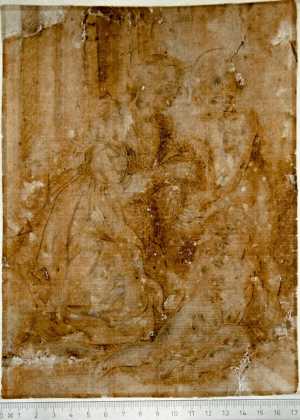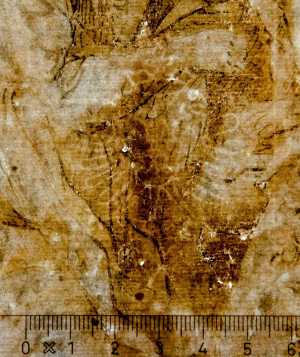Specifications
| Title | The Holy Family with St John the Baptist |
|---|---|
| Material and technique | Pen and brown ink, brown wash, heightened with white with brush, on paper |
| Object type |
Drawing
> Two-dimensional object
> Art object
|
| Location | This object is in storage |
| Dimensions |
Height 225 mm Width 170 mm |
|---|---|
| Artists |
Copy after:
Andrea del Sarto (Andrea d’Agnolo)
Previously attributed: Hans von Aachen Maker: Anoniem |
| Accession number | DN 120/17 (PK) |
| Credits | Gift Dr A.J. Domela Nieuwenhuis, 1923 |
| Department | Drawings & Prints |
| Acquisition date | 1923 |
| Creation date | in circa 1550-1600 |
| Watermark | Double-headed eagle, crowned, with heart shield, something indistinct below, 65 x 38 mm, upright, on P4 of 6P, vH, approximately centre of sheet (folio). Compare: Piccard Online 160166 (Weimar 1557, 65 x 46 mm). See image. [AE 2019] |
| Inscriptions | 'Andrea del Sarto inf.' (verso ; above centre, pen and brown ink) |
| Collector | Collector / Adriaan Domela Nieuwenhuis |
| Provenance | Anon., Italy; Dr. Adriaan J. Domela Nieuwenhuis (1850-1935, L.356b), Munich/Rotterdam, donated with his collection in 1923 (attrib. Giulio Romano) |
| Research |
Show research Italian Drawings 1400-1600 |
| Material | |
| Object | |
| Technique |
Highlight
> Painting technique
> Technique
> Material and technique
Brown wash
> Washing
> Wash
> Drawing technique
> Technique
> Material and technique
|
| Geographical origin | Italy > Southern Europe > Europe |
Do you have corrections or additional information about this work? Please, send us a message


























